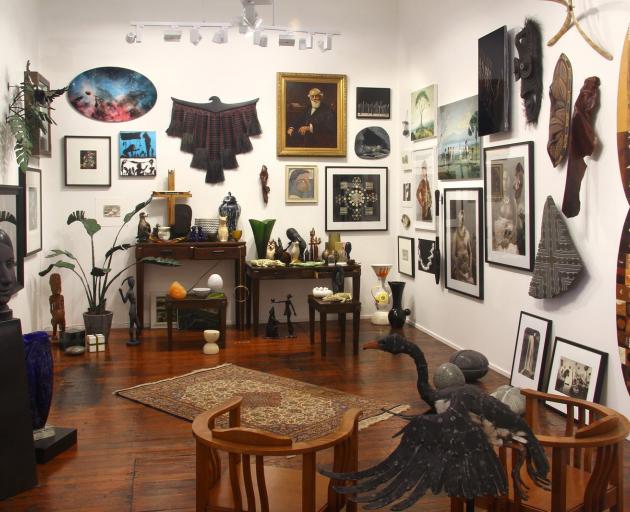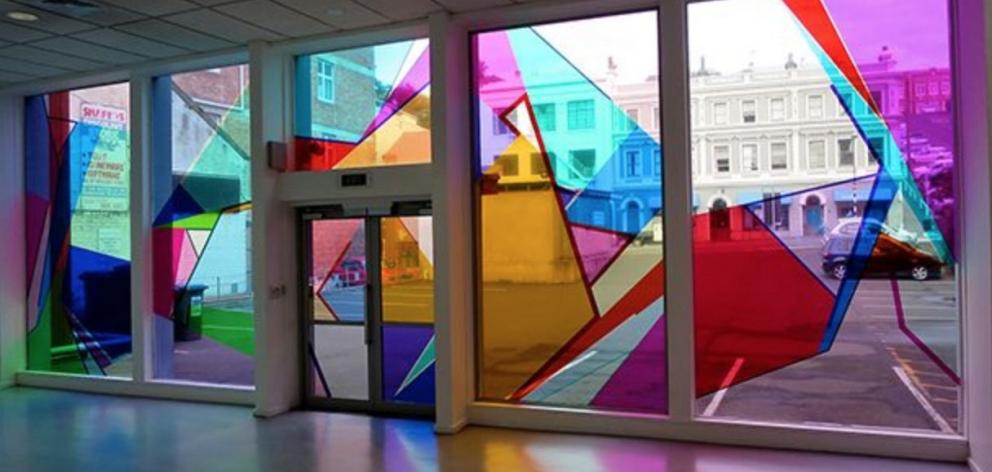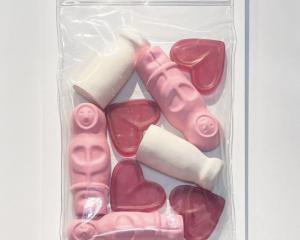In this week's Art Seen, Robyn Maree Pickens looks at exhibitions from Milford Galleries, the Eskdale Gallery and the Dunedin Public Art Gallery.
 The "Wunderkammer" installation at Milford Galleries. Photo: Supplied
''WUNDERKAMMER'' (Milford Galleries)
The "Wunderkammer" installation at Milford Galleries. Photo: Supplied
''WUNDERKAMMER'' (Milford Galleries)

The wunderkammer, or ''cabinet of curiosities'', aesthetic is fully realised in Milford Galleries' summer exhibition, particularly in the narrower space of the back gallery.
The curators have taken full advantage of the recessed space in the back gallery to hang, in a tightly-packed salon-style, the broadest possible array of art works.
Contemporary art works in a range of media are hung alongside historical portraiture alongside non-Western art objects. Beneath the jostling of different eras, media, and culture two large writing desks shoulder a heavy load of sculptural and ceramic works.
As many readers will know, the historical impulse of the wunderkammer is one of display: tangible proof of one's wealth, travel, erudition, and taste.
The wunderkammer arose as a result of Western imperialism and colonialism, and in Aotearoa New Zealand (as in other settler colonies), is therefore a necessarily fraught undertaking.
Milford Galleries acknowledges this tension by writing that the exhibition ''also considers critically (Western) society's drive to categorise and regulate the world around it and underlying narratives of the exploitation of human cultures and the natural environment''.
The inclusion of a significant number of contemporary works by Maori and Pacific artists is the clearest indication of Milford's commitment to critically address the history of wunderkammer. Whether such works successfully unsettle this history lies with the viewer.
 Worm in her vein, 2018 (embroidery on printed silk), by Jay Hutchinson
''Loosely based on a series of events that never actually happened, including a conversation and an argument with my sister circa 1988'', Jay Hutchinson (Eskdale Gallery)
Worm in her vein, 2018 (embroidery on printed silk), by Jay Hutchinson
''Loosely based on a series of events that never actually happened, including a conversation and an argument with my sister circa 1988'', Jay Hutchinson (Eskdale Gallery)

One possible way of categorising Jay Hutchinson and his work is as a ''male artist who embroiders teenage angst''. While that description is technically true it is somehow too neat and reductive. It is too much of a sound byte.
However, retaining the central idea that Hutchinson's work embodies contradiction, a more nuanced view suggests that he is interested in what appears to be true: the veracity or truthfulness of an art object.
At a glance, the substrate or ground of most works appear to be the pulled out pages of a ruled exercise book, or the school-standard Warwick cardboard covers of refill pads and exercise books. In fact, the substrate of the loose pages is silk, and the cardboard covers is drilled cotton.
While this selection is no doubt based on practical reasons ''it is easier to embroider on silk and cotton than cellulose paper'' the disguised media lends a layer of complexity that the works might otherwise lack. For a start the ''disguised'' silk and cotton substrates correlate with the ambiguity suggested by the exhibition's long title, ''Loosely based on a series of events that never actually happened''.
The work that uses this play on ambiguity and veracity to full advantage is Worm in her vein which, through partially ripped pages, layers up multiple variations on the embroidered text that is actually visible: ''artless vein''.
 The Expanded Gallery, 2017-2018, by Shannon Novak
''The Expanded Gallery'', Shannon Novak (Dunedin Public Art Gallery)
The Expanded Gallery, 2017-2018, by Shannon Novak
''The Expanded Gallery'', Shannon Novak (Dunedin Public Art Gallery)

This was my first augmented reality experience with an artwork in a gallery. I dutifully followed the gallery's instructions and downloaded the Aurasma app on my smartphone and found Shannon Novak's Aurasma channel (to be distinguished from images of Novak's art that appear in the same list). I went to the exhibition anticipating that it might not work, but it did.
Once in the exhibition space, I held my phone, with the Aurasma app open, in front of the coloured triangles which stretch across the entire back window of the gallery. Even without the app open, the play of light streaming through the elegant geometric colour fields was enjoyable. But with the app open, these works came to life, and it would be fair to say, that my experience was augmented.
On the day I went, with phone directed at the coloured triangles, six white circles centred around a seventh stationary circle radiated inwards and outwards continuously in a way that energised or complemented the play of light and colour. The gallery's web page indicates that new elements will appear in physical and digital forms so future visitors may experience a different augmented reality. In addition to digital and augmented platforms, Novak's work will continue to appear in new physical forms around the city.
-By Robyn Maree Pickens








![Untitled (c. mid 1990s, [pink 3]), by Martin Thompson, 415mm×590mm. Photo: courtesy of Brett...](https://www.odt.co.nz/sites/default/files/styles/odt_landscape_small_related_stories/public/story/2024/02/untitled_pink_3.jpg?itok=Q0aQrc9o)



